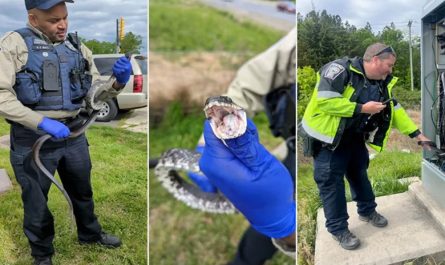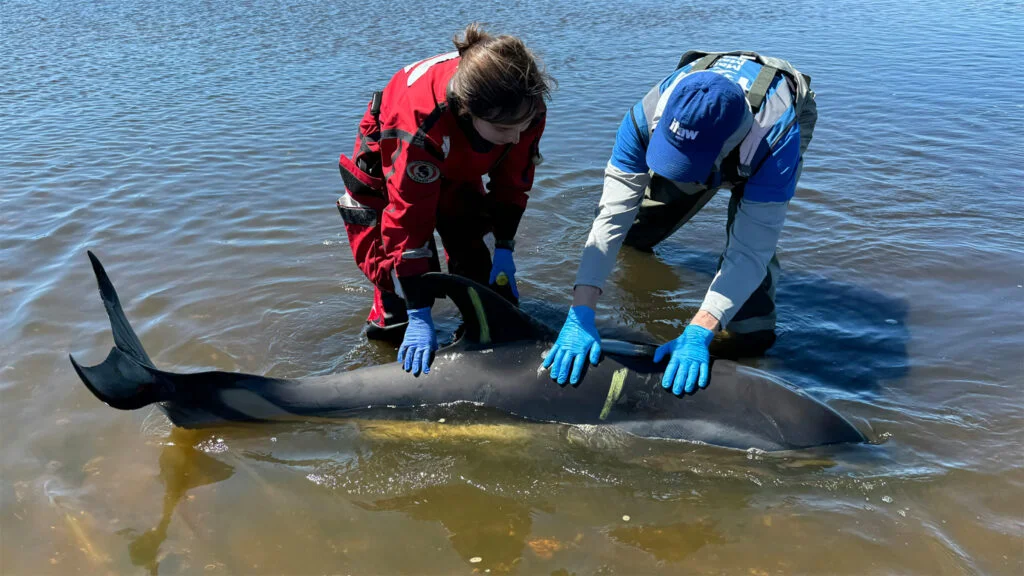
Over 100 dolphins saved after shallow tide left them stranded off Cape Cod
On June 28, a pod of Atlantic white-sided dolphins became stuck in the shallow mudflats at the mouth of the Herring River estuary on Massachusetts’Cape Cod. Within a few days, rescuers counted 146 of the aquatic mammals that were trapped in the tidal mouth. The International Fund for Animal Welfare, a Washington D.C.-based conservation charity, eventually confirmed that it was the largestmass-strandingof dolphins in U.S. history.
The beaching kicked off a major operation to try and save the dolphins. Staff from IFAW led the rescue effort, which spanned five days and included help from multiple organizations: the AmeriCorps of Cape Cod, Whale and Dolphin Conservation, the New England Aquarium, the Center for Coastal Studies, the Wellfleet Harbormaster. Dozens of local volunteers also pitched in. The efforts were not in vain, and the IFAW said that the group saved 102 dolphins, approximately 70 percent of those that were stranded.
Cape Cod has a history of marine mammal strandings, a phenomenon that results from a rare combination of coastal geography and changing tides. When seen on a map, Cape Cod juts out into the ocean in the shape of a hook, with a smaller hook nested inside it at Wellfleet. “It’s basically a trap, from a geographical sense,” says Sarah Sharp, an animal rescue veterinarian with IFAW, who was on the scene for the duration of the rescue. Wellfleet also has one of the largest tide fluctuations on the East Coast—sometimes the difference is 12 feet—second only to Canada’s Bay of Fundy. The combination ensnared the pod of dolphins, which usually swim farther out at sea. “The species is pelagic, meaning deep offshore dolphins,” Sharp says. “They’re not used to having a 12-foot vertical tide drop and then ending up on land when that happens.”
IFAW has been running rescue operations at Cape Cod for 26 years. Sharp and her colleagues respond to an average of 315 stranding events each year—typically a single marine mammal, or a small group of three or four. Prior to June 28 the largest mass stranding on record in the U.S. was 97 Atlantic white-sided dolphins, in 1998. But that stranding happened over the course of four weeks, not all at once. The largest that Sharp had personally experienced was 45 common dolphins, in 2020.
Sharp recalls arriving at the June 28th scene in the late morning and being astonished at the sight. From her vantage, she counted more than 80 large dolphins lying in the mud. Many of them were thrashing or flipping their tails, so she knew they were still alive. There were likely more she couldn’t see around the corner. Sharp had five staffers with her, and more than a dozen volunteers, but they were grossly outnumbered. “It was completely overwhelming,” she says.
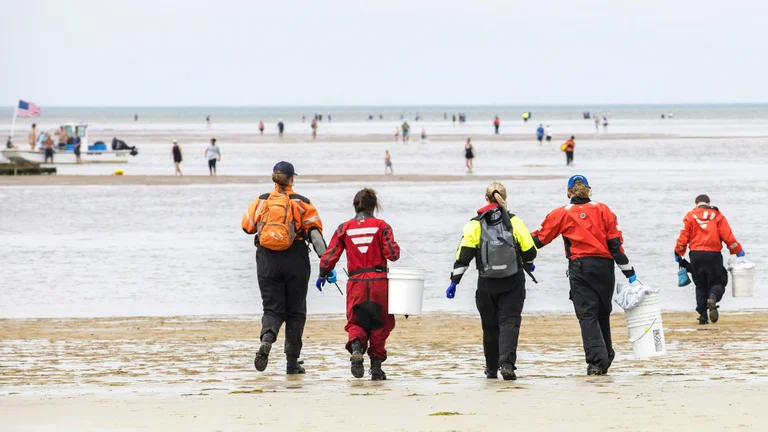
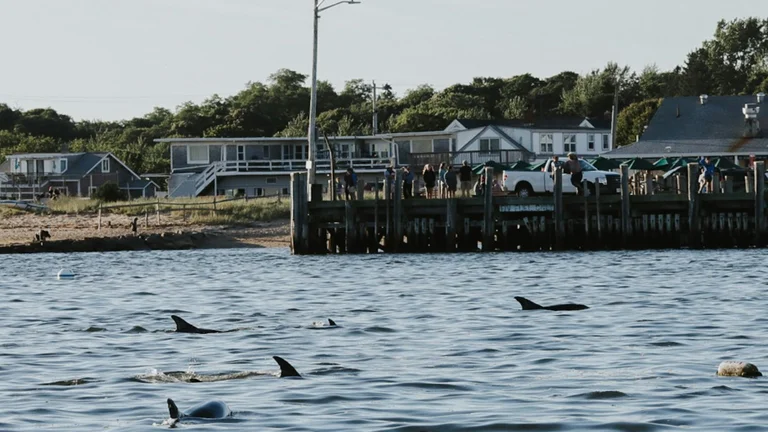
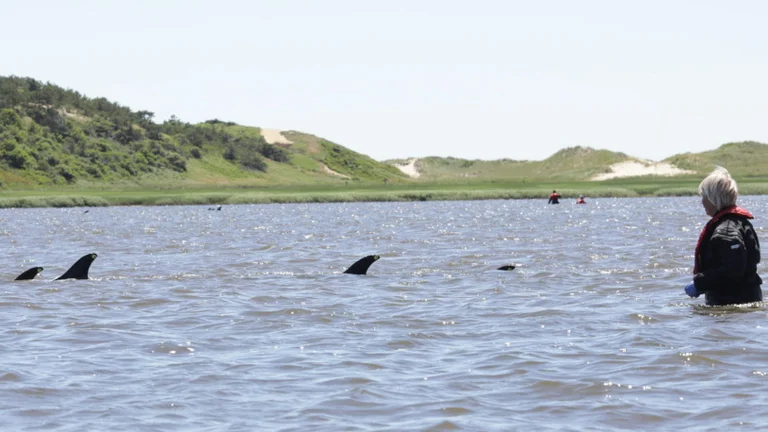
The group quickly divided into small teams and fanned out to cover the broad area. As Sharp rushed down to the shore, she was overcome by the sudden sound of dolphins breathing—a forceful whoosh in and out that seemed to come from all sides.
In a typical rescue, Sharp and team would lift the stranded dolphin onto a stretcher and transport it on a specialized beach cart to a custom-built mobile veterinary clinic that staffers call “Moby.” They’d place the dolphin on a squishy foam mat inside, shelter it from heat and sun, administer IV fluids, and then transport it to Provincetown, on the tip of Cape Cod, where it would be released into food-rich waters near the Stellwagen Bank National Marine Sanctuary.
But the June 28 event was not a typical rescue—there were far too many dolphins to use Moby. Instead, Sharp and the others went from dolphin to dolphin, rolling those that were on their sides onto their bellies and then hand-digging the sand out from beneath the dolphins’ nine-inch pectoral fins so the appendages wouldn’t dislocate. The rescuers then cleared out sharp oyster shell shards from the dolphins and covered them with light-colored sheets to protect them from the sun. “We tried to be methodical, but we ended up running to whichever animal was thrashing the hardest,” Sharp says.
Over the course of an hour or so, they were able to reach every live stranded dolphin before the tide turned and the process of “refloating”—getting the dolphins to swim in deeper water—began. At that point, the rescue team faced the most critical point of the operation. “When the water comes back in, the chance of [dolphins] drowning is high,” Sharp says. If a dolphin falls back over onto its side before the water is deep enough for it to swim, it might not be able to right itself and could drown if the water level is higher than its blowhole.
Sharp compares the refloating experience to whack-a-mole, rushing from dolphin to dolphin trying to keep them upright as the tide rushes back in. “Time morphs weirdly when you’re out there doing these things, but I think it was probably 45 minutes of panic, running from animal to animal trying to save as many as we could.”
Afterward, the rescue team switched from foot to boat to herd the swimming dolphins further away from the shore. Boat crews worked until sunset. The next morning, Saturday June 29, Sharp and her colleagues were back on the scene monitoring ten dolphins who remained in shallow waters.

By Sunday morning, six dolphins remained. One became stranded at low tide, and was in such bad condition that Sharp euthanized it. Not only because it was the most humane thing to do, but because the gravely injured dolphin was most likely preventing the others from leaving for deeper water. As the IFAW stated in a press release: “The very social nature of these dolphins means that they will stick together even in a bad situation. By removing individuals that are not well, the group may be more easily moved offshore.”
Meanwhile, a call came in that 20 Atlantic white-sided dolphins were stranded nearby in Brewster. Three of the 20 died before rescuers arrived at the scene. The rest were able to be successfully refloated.
By Tuesday morning, July 2, a total of 11 dolphins were still swimming dangerously close to shore at Welfleet. When the mammals began to move up shore toward Duck Creek, which Sharp describes as a historic mass stranding area that’s particularly difficult to extract from, rescuers herded them to a more accessible area. The dolphins became stranded there, where Sharp and team were waiting to bring them into Moby and administer advanced treatment. Two were euthanized for their condition. Nine were treated and released in Provincetown.
As of July 15, of the 146 stranded dolphins, 102 are believed to have survived, 37 perished, and seven were euthanized for humane purposes. As for what triggered the biggest mass dolphin stranding in recorded U.S. History, no one can say if factors beyond Cape Cod’s geography and tidal shift led the animals to become trapped.
Scientists do know that the species that most typically strands shifts over time. In Cape Cod in the 1980s and early 1990s, it was pilot whales. In the late 90s it was Atlantic white-sided dolphins. In the early 2000s, it was common dolphins, which continue to be the most frequent species stranded today—although this recent mass stranding may be the start of a shift back to Atlantic white-sided dolphins.
“The Gulf of Maine is the fastest warming body of water on the planet so we know that this ecosystem is changing quite a bit,” Sharp says. “That’s probably affecting where the prey are distributed and the dolphins follow the prey. Other than that we don’t know.”


